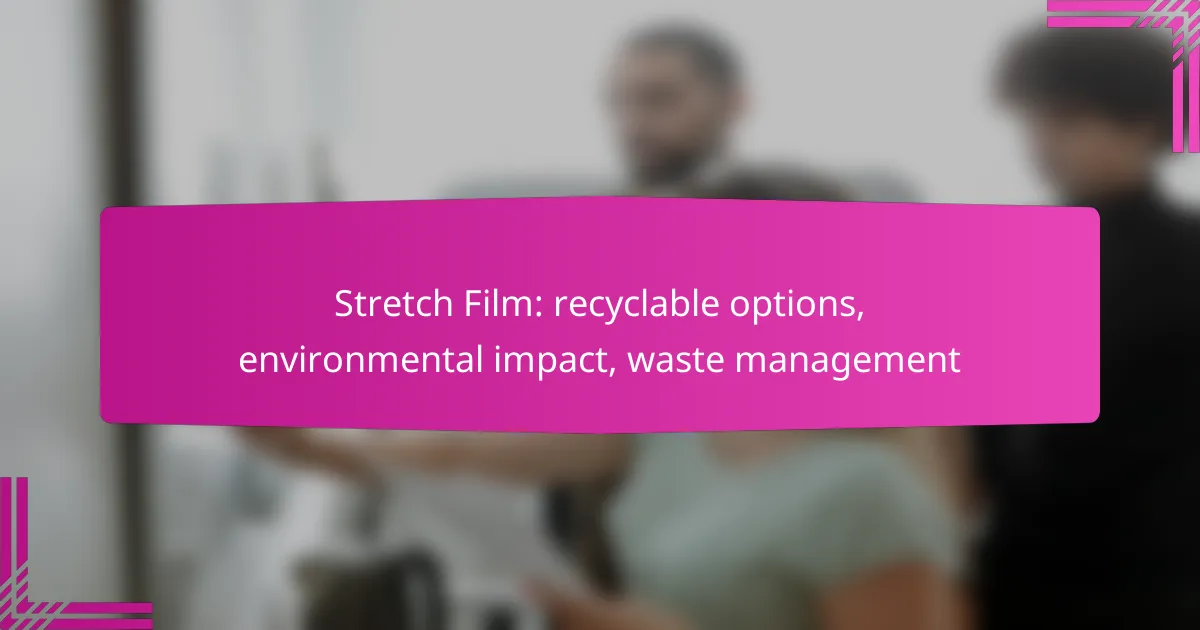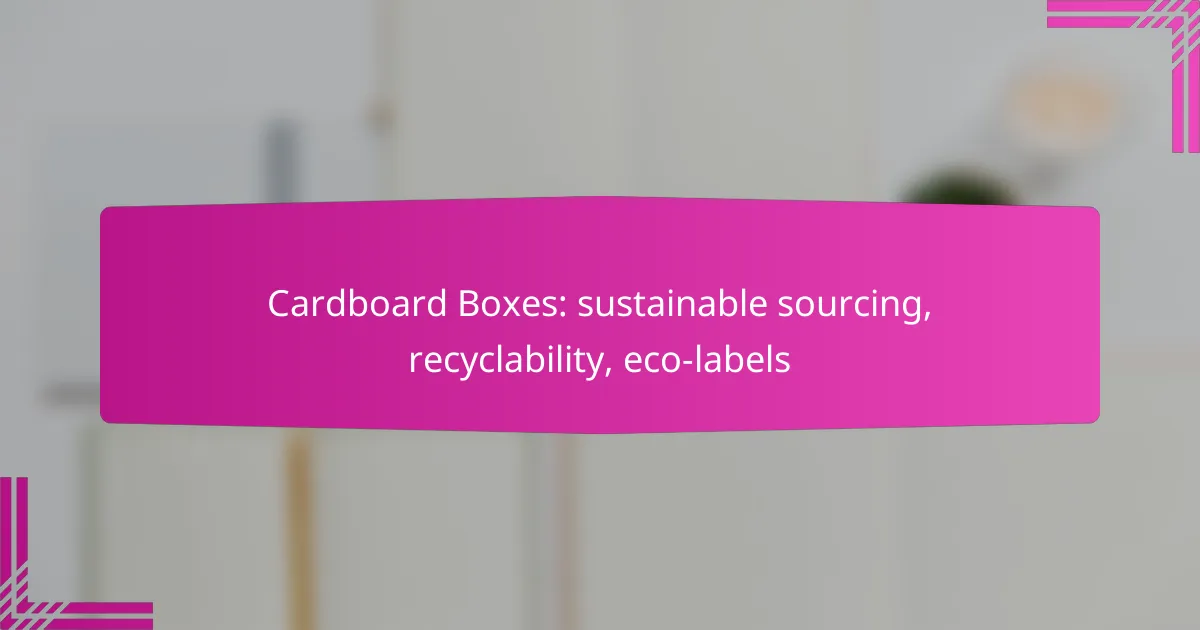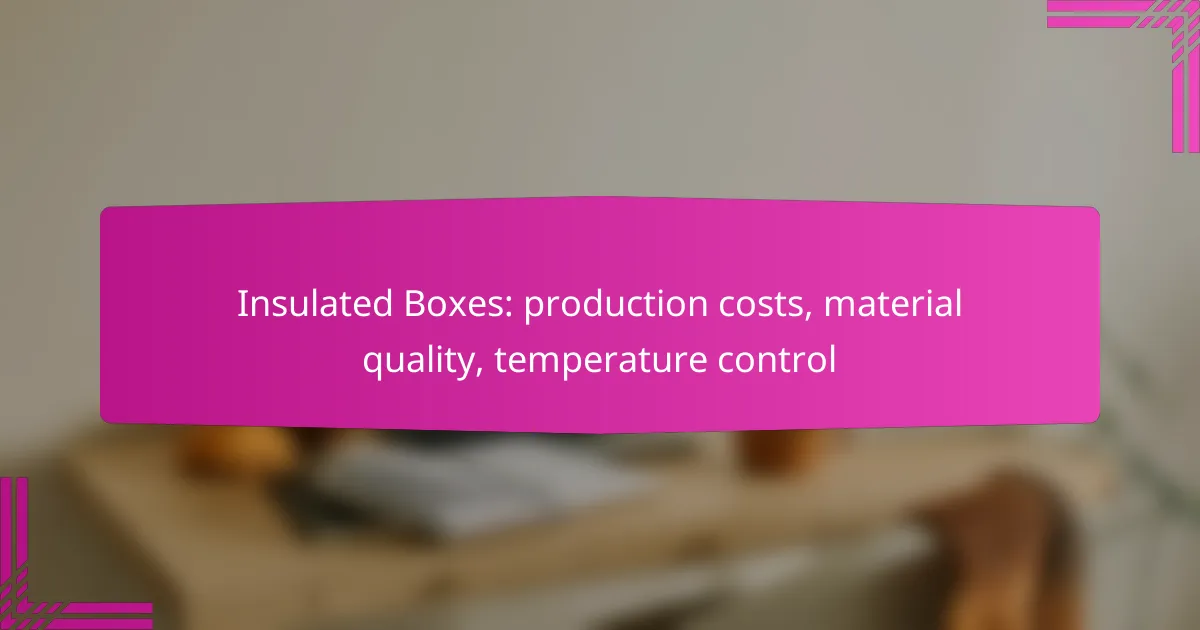Foam wraps pose considerable recycling challenges, particularly in New Zealand, where limited facilities and contamination issues hinder effective waste management. As a response, eco-friendly alternatives such as biodegradable packaging and reusable fabric wraps are gaining traction, offering sustainable solutions that reduce environmental impact. By adopting practices that minimize foam use and promote recycling, businesses can play a crucial role in waste reduction and contribute to a healthier planet.
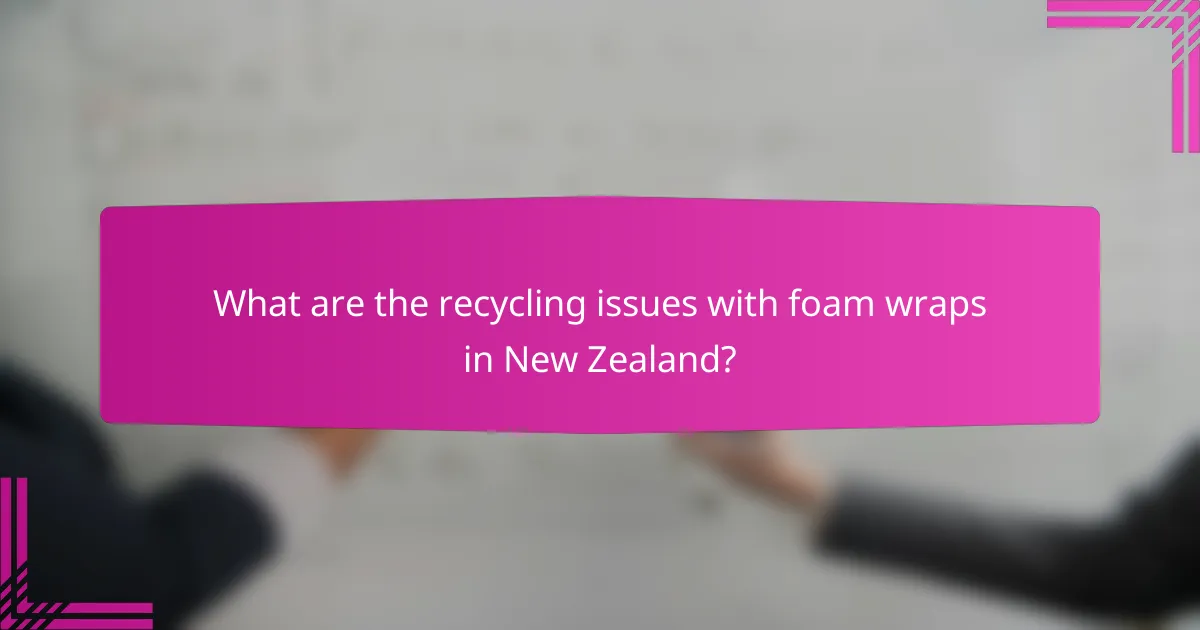
What are the recycling issues with foam wraps in New Zealand?
Foam wraps present significant recycling challenges in New Zealand due to limited facilities, contamination issues, and low recycling rates. These factors hinder effective waste management and contribute to environmental concerns.
Limited recycling facilities
New Zealand has a limited number of recycling facilities equipped to process foam wraps. Most recycling centers focus on more commonly accepted materials like plastics and metals, leaving foam wraps largely unaddressed. This lack of infrastructure means that many consumers and businesses have few options for proper disposal.
As a result, foam wraps often end up in landfills, where they can take hundreds of years to decompose. To address this, local councils and businesses are encouraged to explore partnerships with specialized recycling companies that can handle foam materials.
Contamination challenges
Contamination is a major issue affecting the recycling of foam wraps. When foam is mixed with food waste or other materials, it becomes unsuitable for recycling. This contamination can occur during collection or at the recycling facility, leading to increased costs and reduced efficiency in processing.
To minimize contamination, users should ensure foam wraps are clean and dry before disposal. Educating consumers about proper disposal practices can help improve the overall recycling process.
Low recycling rates
The recycling rates for foam wraps in New Zealand are notably low, often falling below 10%. This is primarily due to the aforementioned issues of limited facilities and contamination. Many consumers are unaware of the proper disposal methods, leading to a lack of participation in recycling programs.
To improve recycling rates, initiatives that raise awareness and provide clear guidelines on foam wrap disposal are essential. Community programs and incentives can motivate individuals and businesses to engage in better waste management practices.
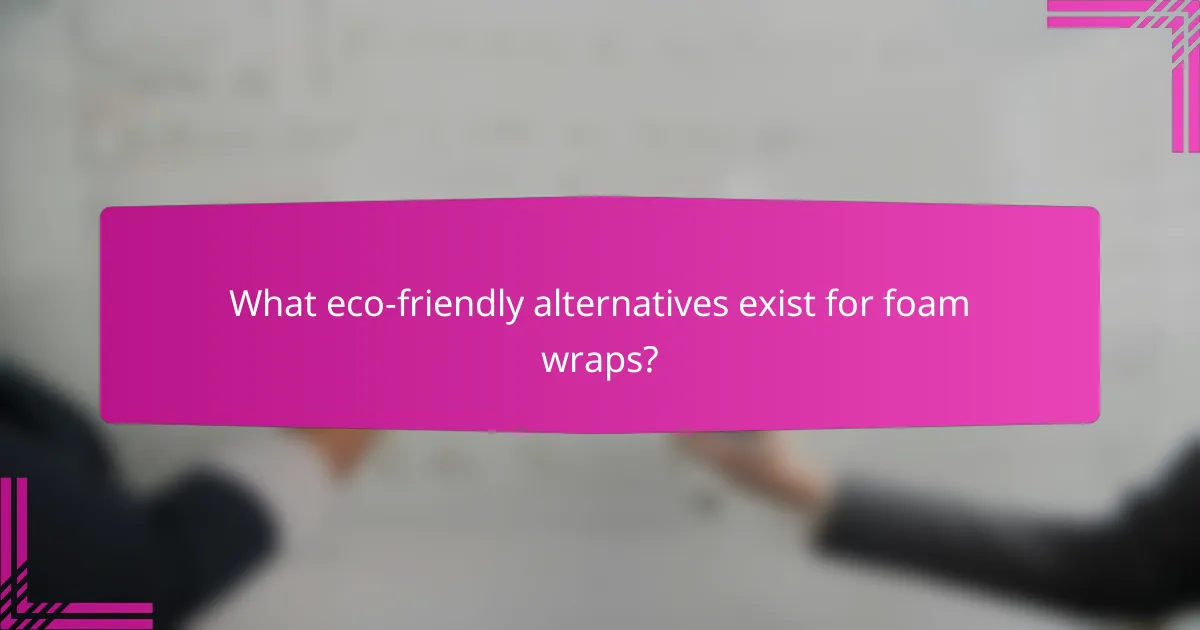
What eco-friendly alternatives exist for foam wraps?
Eco-friendly alternatives to foam wraps include biodegradable packaging, reusable fabric wraps, and compostable materials. These options help reduce waste and environmental impact while providing effective protection for products during shipping and storage.
Biodegradable packaging options
Biodegradable packaging is designed to break down naturally over time, reducing landfill waste. Materials such as plant-based plastics, paper, and starch-based foams are common choices. When selecting biodegradable options, check for certifications like ASTM D6400 or EN 13432 to ensure they meet composting standards.
Consider the intended use and disposal method; some biodegradable materials may require specific conditions to decompose effectively. For example, industrial composting facilities can handle certain types of biodegradable plastics that won’t break down in home compost bins.
Reusable fabric wraps
Reusable fabric wraps, often made from cotton or other textiles, provide a sustainable alternative to foam wraps. These wraps can be used multiple times, significantly reducing waste. They are particularly useful for wrapping items like gifts, food, or fragile products during transport.
When using fabric wraps, opt for those treated with eco-friendly coatings for added durability and moisture resistance. Washing and maintaining these wraps properly can extend their lifespan, making them a cost-effective and environmentally friendly choice.
Compostable materials
Compostable materials are designed to break down into non-toxic components in a composting environment. Options include molded pulp, certain bioplastics, and paper products. These materials can enrich soil when composted correctly, making them a beneficial choice for the environment.
To ensure effective composting, verify that the materials are certified compostable and follow local composting guidelines. Some compostable items may not decompose in standard landfills, so it’s essential to dispose of them in appropriate composting facilities or home compost systems.

How can businesses reduce foam wrap waste?
Businesses can significantly reduce foam wrap waste by adopting sustainable practices that minimize the use of foam materials and promote recycling. Implementing take-back programs, utilizing minimal packaging strategies, and educating consumers are effective methods to achieve waste reduction.
Implementing take-back programs
Take-back programs allow businesses to collect used foam wraps from customers for recycling or proper disposal. This not only helps divert waste from landfills but also encourages customers to participate in sustainability efforts. Companies can partner with local recycling facilities to ensure that the collected materials are processed correctly.
To establish a successful take-back program, businesses should clearly communicate the process to customers and provide convenient drop-off points. Offering incentives, such as discounts or rewards, can further motivate participation and enhance customer loyalty.
Using minimal packaging strategies
Adopting minimal packaging strategies involves reducing the amount of foam wrap used in shipping and product protection. Businesses can explore alternatives such as biodegradable materials, recycled paper, or reusable containers. These options not only lessen environmental impact but can also appeal to eco-conscious consumers.
Conducting a packaging audit can help identify areas where foam can be reduced. For instance, using custom-sized boxes can eliminate the need for excess padding, while bulk shipping can minimize individual packaging requirements. Businesses should aim for a balance between protection and sustainability.
Educating consumers on waste reduction
Educating consumers about waste reduction is crucial for fostering a culture of sustainability. Businesses can provide information on the environmental impact of foam wraps and the importance of recycling. This can be done through marketing materials, social media campaigns, or workshops.
Encouraging customers to return foam wraps and choose eco-friendly options can lead to a more informed consumer base. Clear labeling on products about recyclable materials and proper disposal methods can also enhance awareness and participation in waste reduction efforts.
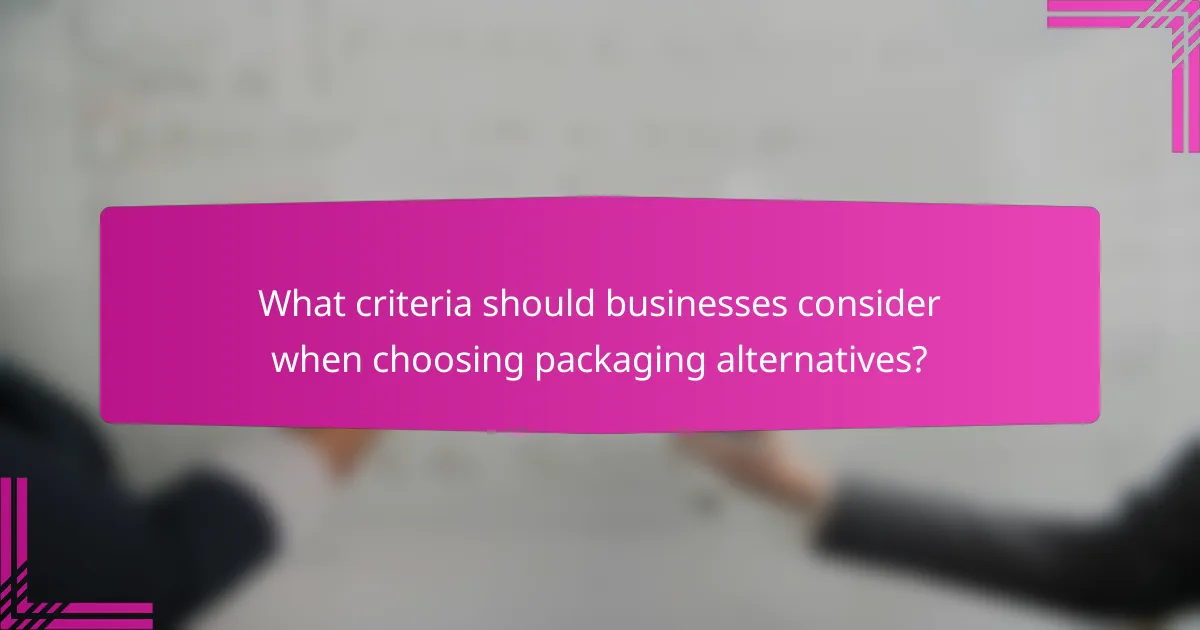
What criteria should businesses consider when choosing packaging alternatives?
Businesses should evaluate cost-effectiveness, environmental impact, and consumer preferences when selecting packaging alternatives. These factors help ensure that the chosen materials align with financial goals, sustainability efforts, and market demands.
Cost-effectiveness
Cost-effectiveness is crucial for businesses when considering packaging alternatives. This includes not only the initial purchase price but also long-term costs associated with disposal and potential regulatory fees. Comparing options like biodegradable materials versus traditional plastics can reveal significant savings over time.
For example, while eco-friendly packaging may have a higher upfront cost, it can reduce waste disposal fees and improve brand image, potentially leading to increased sales. Businesses should conduct a thorough cost analysis to identify the most financially viable options.
Environmental impact
The environmental impact of packaging materials is a key consideration for businesses aiming to reduce their carbon footprint. This includes assessing the life cycle of materials, from production to disposal, and understanding how they affect ecosystems. Choosing recyclable or compostable options can significantly lower environmental harm.
For instance, materials like recycled paper or plant-based plastics often have a lower environmental impact compared to conventional plastics. Businesses should look for certifications, such as FSC for paper products, to ensure their packaging choices support sustainability goals.
Consumer preferences
Understanding consumer preferences is essential for businesses selecting packaging alternatives. Many consumers today prioritize sustainability and are willing to pay more for eco-friendly products. Conducting market research can help businesses identify what their target audience values in packaging.
For example, surveys may reveal that consumers prefer minimal packaging or materials that are easily recyclable. Aligning packaging choices with these preferences can enhance customer loyalty and improve brand perception in a competitive market.
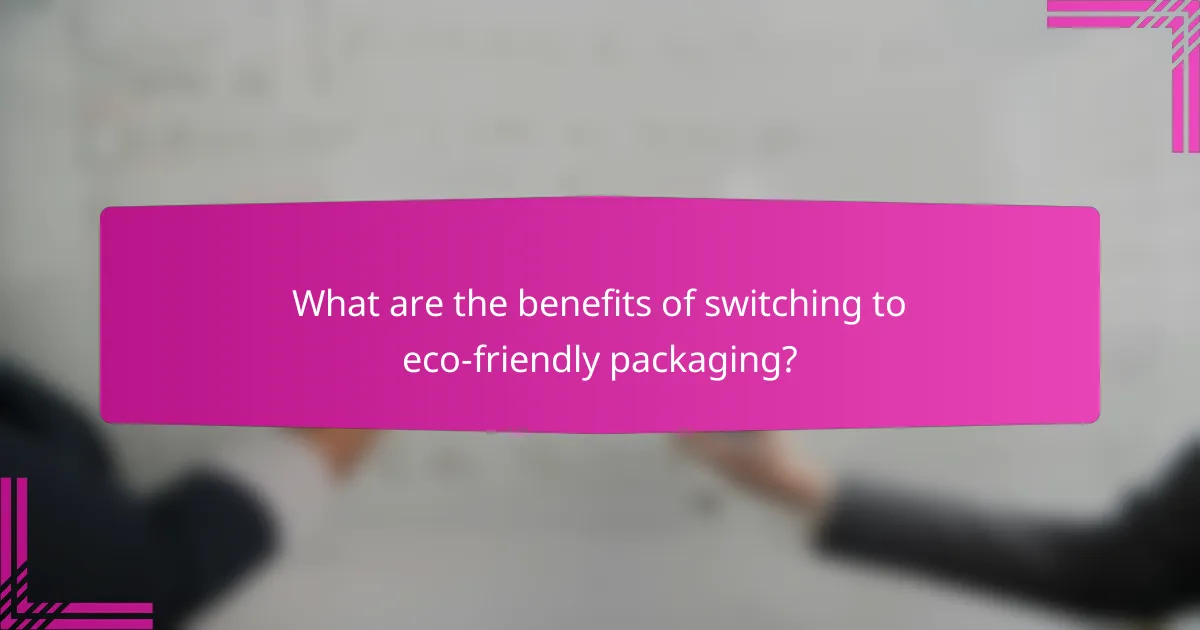
What are the benefits of switching to eco-friendly packaging?
Switching to eco-friendly packaging offers numerous advantages, including improved sustainability, enhanced customer loyalty, and potential cost savings. By opting for biodegradable or recyclable materials, businesses can reduce their environmental impact while appealing to eco-conscious consumers.
Enhanced brand reputation
Using eco-friendly packaging can significantly boost a brand’s reputation. Consumers are increasingly prioritizing sustainability, and brands that demonstrate environmental responsibility often enjoy greater customer loyalty and trust.
For example, companies that use recycled materials or biodegradable options can market themselves as environmentally friendly, attracting a demographic that values sustainability. This positive perception can lead to increased sales and a stronger market position.
Compliance with regulations
Many regions are implementing stricter regulations on packaging waste, making eco-friendly options not just beneficial but necessary. Compliance with these regulations can help businesses avoid fines and legal issues.
For instance, the European Union has set ambitious targets for reducing plastic waste, prompting companies to adopt sustainable packaging solutions. Staying ahead of these regulations can position a business as a leader in sustainability.
Long-term cost savings
Investing in eco-friendly packaging can lead to long-term cost savings. While the initial investment may be higher, sustainable materials often reduce waste disposal costs and can lower packaging expenses over time.
Additionally, many eco-friendly options are lightweight, which can decrease shipping costs. Companies that switch to sustainable practices may also benefit from incentives or tax breaks offered by governments aiming to promote environmental responsibility.
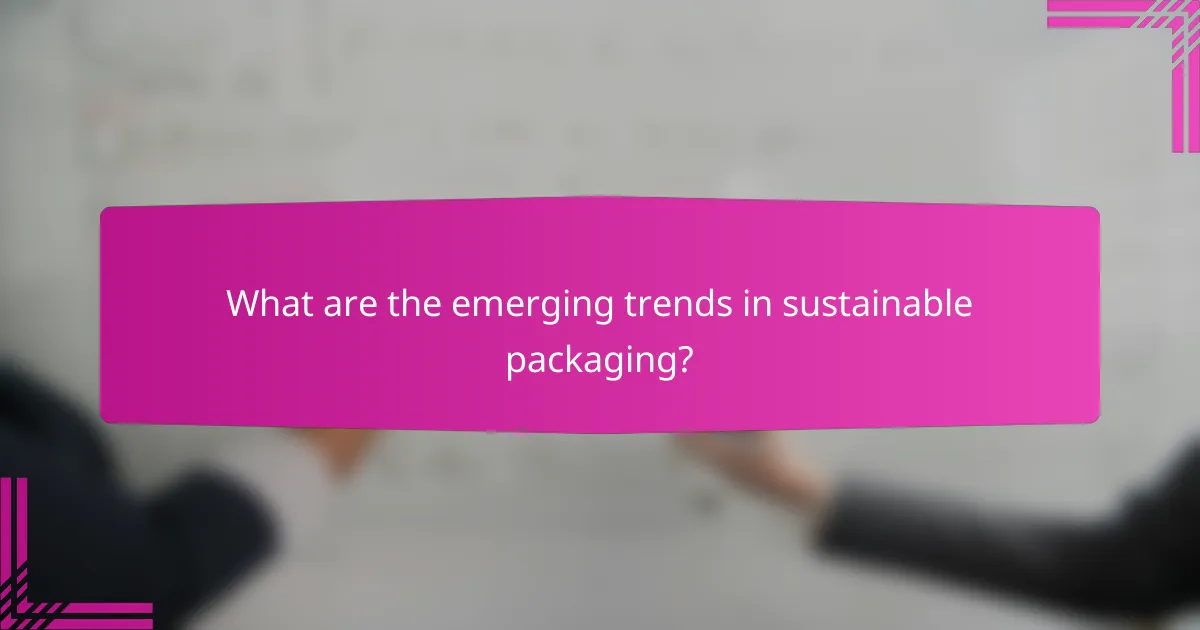
What are the emerging trends in sustainable packaging?
Emerging trends in sustainable packaging focus on reducing environmental impact through innovative materials and practices. Companies are increasingly adopting eco-friendly alternatives to traditional packaging, addressing both consumer demand and regulatory pressures.
Innovations in biodegradable materials
Biodegradable materials are gaining traction as a viable alternative to conventional packaging. These materials, such as plant-based plastics and compostable films, break down more easily in natural environments, reducing landfill waste. For example, polylactic acid (PLA) derived from corn starch is a popular choice for food packaging.
When selecting biodegradable options, consider their disposal requirements. Some may need industrial composting facilities, while others can decompose in home composts. Always check local regulations to ensure proper disposal methods are available.
Increased consumer demand for sustainability
Consumers are increasingly prioritizing sustainability in their purchasing decisions, driving brands to adopt eco-friendly packaging solutions. Surveys indicate that a significant portion of shoppers are willing to pay more for products with sustainable packaging. This trend is prompting companies to rethink their packaging strategies to meet consumer expectations.
To align with this demand, businesses should transparently communicate their sustainability efforts. Highlighting the use of recycled materials, biodegradable options, or reduced packaging can enhance brand loyalty. Engaging customers through educational campaigns about the benefits of sustainable packaging can also foster a positive brand image.

